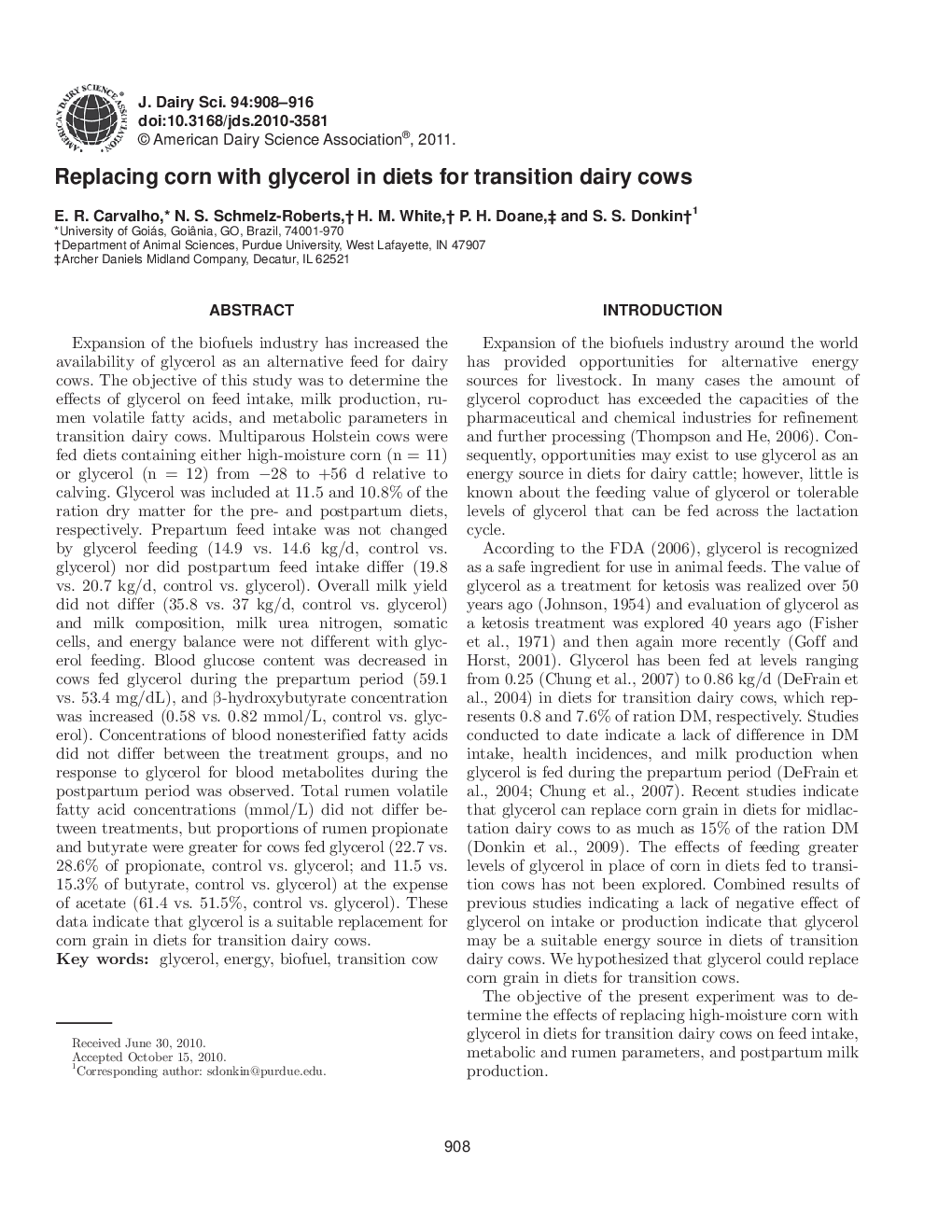| Article ID | Journal | Published Year | Pages | File Type |
|---|---|---|---|---|
| 10980097 | Journal of Dairy Science | 2011 | 9 Pages |
Abstract
Expansion of the biofuels industry has increased the availability of glycerol as an alternative feed for dairy cows. The objective of this study was to determine the effects of glycerol on feed intake, milk production, rumen volatile fatty acids, and metabolic parameters in transition dairy cows. Multiparous Holstein cows were fed diets containing either high-moisture corn (n = 11) or glycerol (n = 12) from â28 to +56 d relative to calving. Glycerol was included at 11.5 and 10.8% of the ration dry matter for the pre- and postpartum diets, respectively. Prepartum feed intake was not changed by glycerol feeding (14.9 vs. 14.6 kg/d, control vs. glycerol) nor did postpartum feed intake differ (19.8 vs. 20.7 kg/d, control vs. glycerol). Overall milk yield did not differ (35.8 vs. 37 kg/d, control vs. glycerol) and milk composition, milk urea nitrogen, somatic cells, and energy balance were not different with glycerol feeding. Blood glucose content was decreased in cows fed glycerol during the prepartum period (59.1 vs. 53.4 mg/dL), and β-hydroxybutyrate concentration was increased (0.58 vs. 0.82 mmol/L, control vs. glycerol). Concentrations of blood nonesterified fatty acids did not differ between the treatment groups, and no response to glycerol for blood metabolites during the postpartum period was observed. Total rumen volatile fatty acid concentrations (mmol/L) did not differ between treatments, but proportions of rumen propionate and butyrate were greater for cows fed glycerol (22.7 vs. 28.6% of propionate, control vs. glycerol; and 11.5 vs. 15.3% of butyrate, control vs. glycerol) at the expense of acetate (61.4 vs. 51.5%, control vs. glycerol). These data indicate that glycerol is a suitable replacement for corn grain in diets for transition dairy cows.
Keywords
Related Topics
Life Sciences
Agricultural and Biological Sciences
Animal Science and Zoology
Authors
E.R. Carvalho, N.S. Schmelz-Roberts, H.M. White, P.H. Doane, S.S. Donkin,
